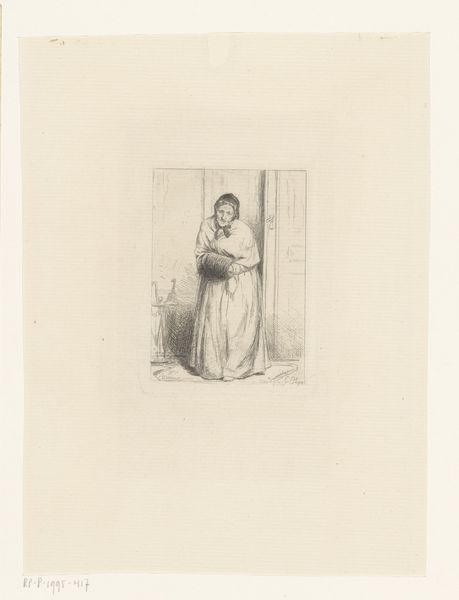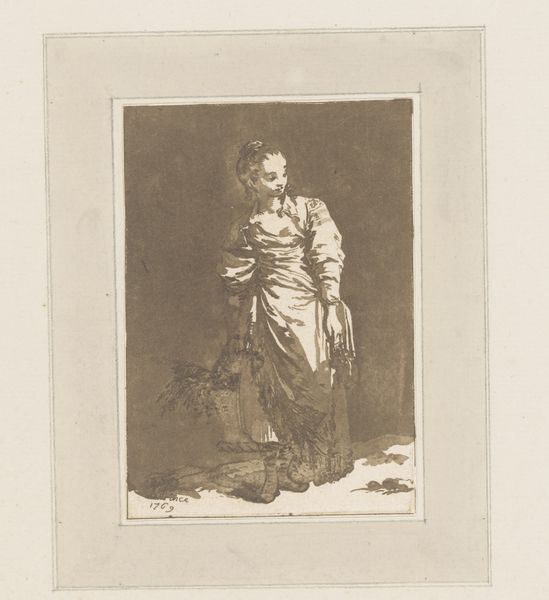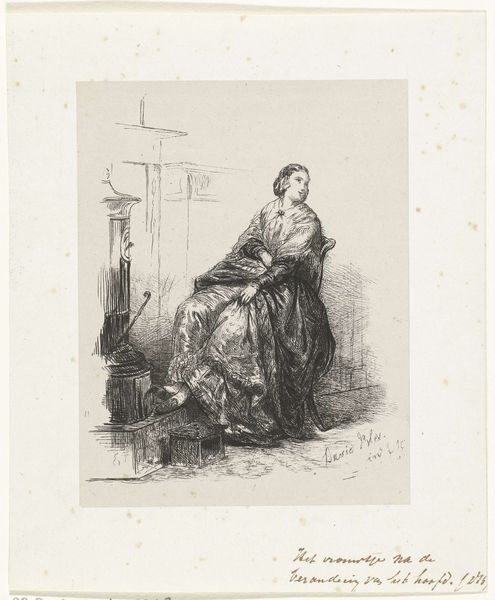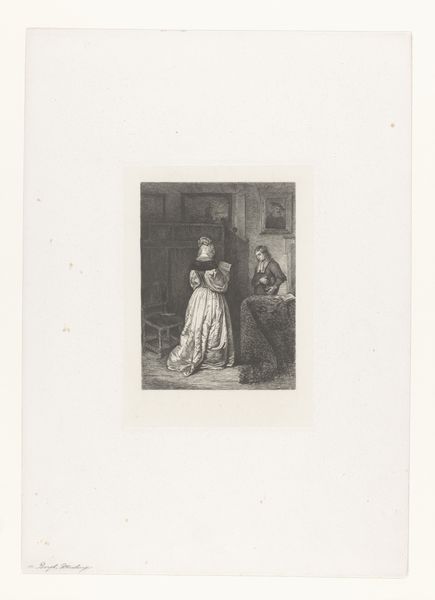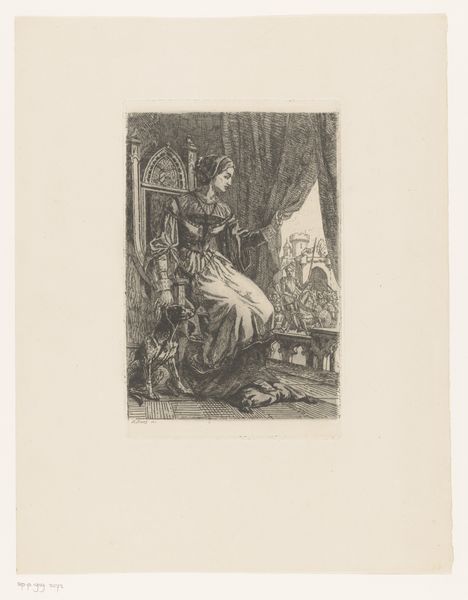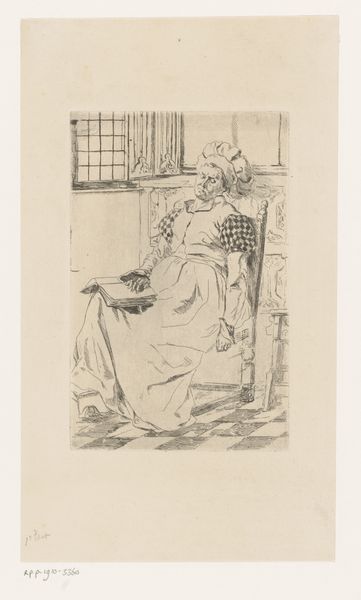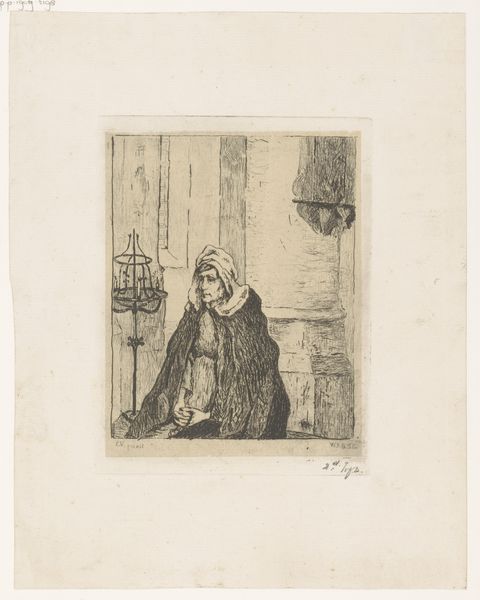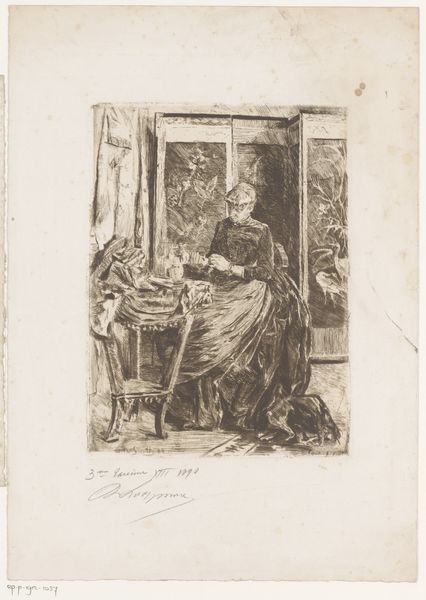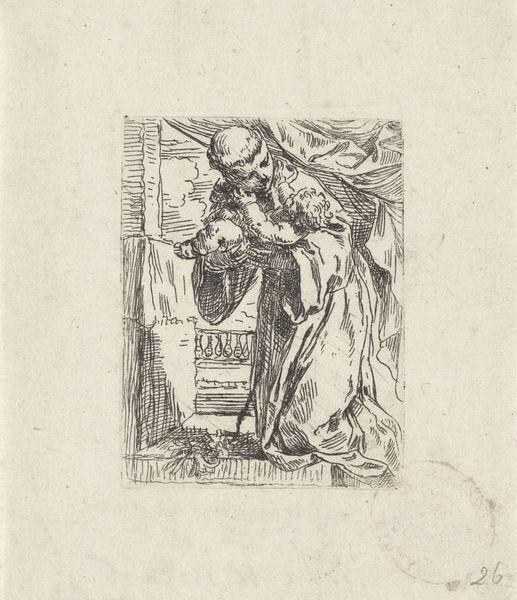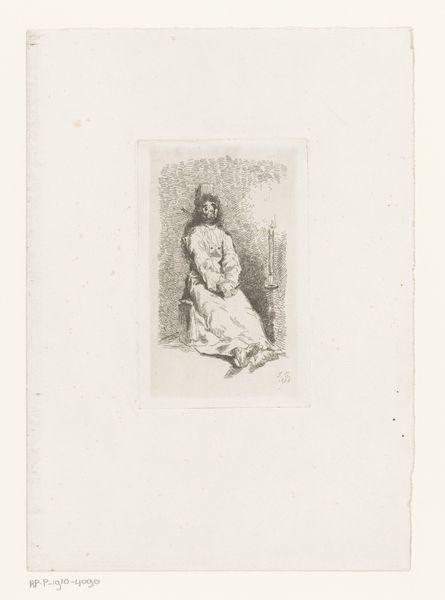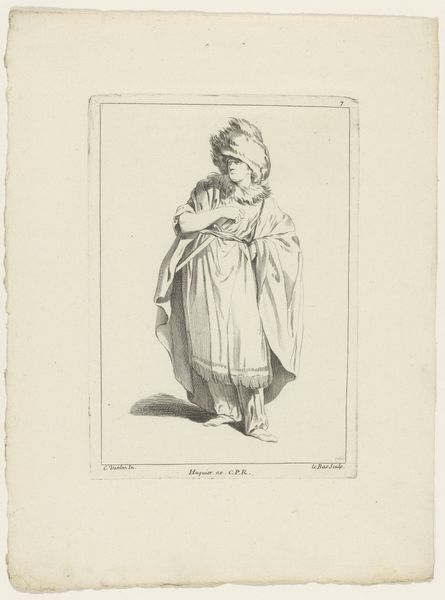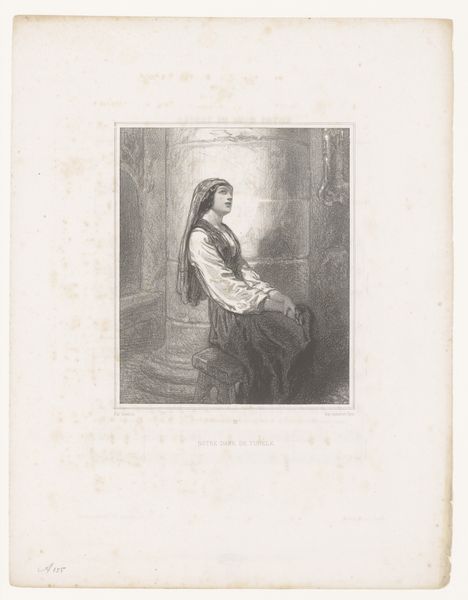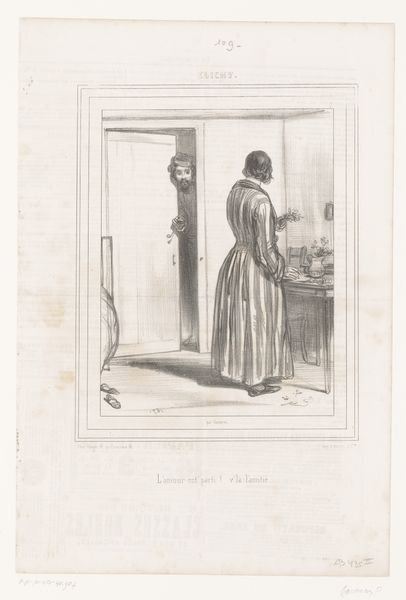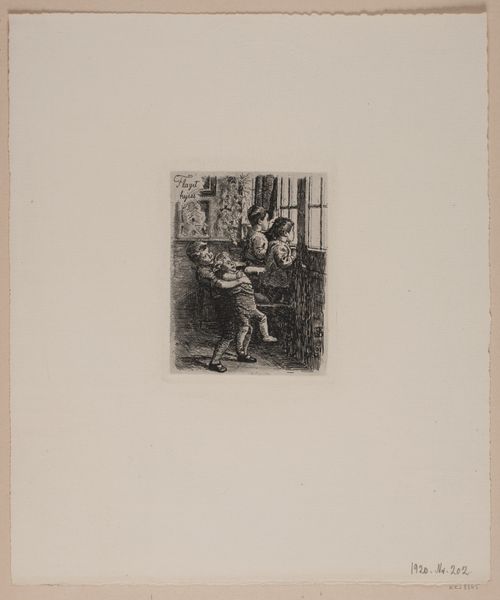
print, etching
#
portrait
# print
#
etching
#
genre-painting
#
realism
Dimensions: 88 mm (height) x 64 mm (width) (plademaal)
Editor: Here we have Carl Bloch's 1880 etching, "Supplikantinden," which translates to "The Supplicant." It's a rather modest piece, but there is an interesting dynamic between the woman’s somewhat timorous demeanor and the stark reality of her surroundings. What are your initial thoughts? Curator: What strikes me immediately is how Bloch situates this woman, seemingly poor, in a threshold. Thresholds are sites of social tension, negotiations between the private and public, and control and access. I think Bloch is prompting us to consider not just *her* supplication, but also the *conditions* of her supplication, which might include a commentary on socio-economic divides. Editor: I hadn’t thought about it that way. I was more focused on her individual expression. The fact that the umbrella next to her looks worn also tells a story, no? Curator: Exactly! The umbrella is also an incredibly telling detail. Consider how objects speak to class and status. The condition of the umbrella emphasizes her limited resources. And doesn’t the muted palette force us to look closer, to examine the socio-economic circumstances impacting women of her time? Perhaps Bloch uses realism to encourage reflection and, dare I say, spur social change. Editor: So you're saying this simple portrait is actually a rather potent commentary on poverty and marginalization? Curator: Precisely. Realism isn’t just about depicting things as they are, but also revealing the underlying power dynamics and inequalities inherent in those realities. Editor: This has really broadened my perspective. It's fascinating to consider how an etching can carry so much social weight. Curator: Absolutely, and understanding art through this critical lens enriches our experience, and prompts us to ask deeper questions about society itself.
Comments
No comments
Be the first to comment and join the conversation on the ultimate creative platform.
